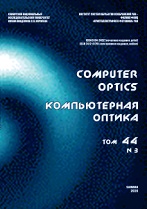|
This article is cited in 5 scientific papers (total in 5 papers)
NUMERICAL METHODS AND DATA ANALYSIS
Motor imagery recognition in electroencephalograms using convolutional neural networks
A. D. Bragina, V. G. Spitsynab
a National Research Tomsk Polytechnic University, 634050, Russia, Tomsk, Lenin Avenue 30
b National Research Tomsk State University, 634050, Russia, Tomsk, Lenin Avenue 36
Abstract:
Electroencephalography is a widespread method to record brain signals with the use of electrodes located on the surface of the head. This method of recording the brain activity has become popular because it is relatively cheap, compact, and does not require implanting the electrodes directly into the brain. The article is devoted to a problem of recognition of motor imagery by electroencephalogram signals. The nature of such signals is complex. Characteristics of electroencephalograms are individual for every person, also depending on their age and mental state, as well as the presence of noise and interference. The multitude of these parameters should be taken into account when analyzing encephalograms. Artificial neural networks are a good tool for solving this class of problems. Their application allows combining the tasks of extracting, selecting and classifying features in one signal processing unit. Electroencephalograms are time signals and we note that Gramian Angular Fields and Markov Transition Field transforms are used to represent time series in the form of images. The article shows the possibility of using the Gramian Angular Fields and Markov Transition Field transformations of the electroencephalogram (EEG) signal for motor imagery recognition using examples of imaginary movements with the right and left hand, also studying the effect of the resolution of Gramian Angular Fields and Markov Transition Field images on the classification accuracy. The best classification accuracy of the EEG signal into the motion and state-of-rest classes is about 99
Keywords:
image analysis, pattern recognition, neural networks, electroencephalogram, Gramian angular field, Markov transition field, motor imagery recognition, convolutional neural networks.
Received: 18.11.2019
Accepted: 14.05.2020
Citation:
A. D. Bragin, V. G. Spitsyn, “Motor imagery recognition in electroencephalograms using convolutional neural networks”, Computer Optics, 44:3 (2020), 482–487
Linking options:
https://www.mathnet.ru/eng/co812 https://www.mathnet.ru/eng/co/v44/i3/p482
|

| Statistics & downloads: |
| Abstract page: | 159 | | Full-text PDF : | 58 | | References: | 24 |
|




 Contact us:
Contact us: Terms of Use
Terms of Use
 Registration to the website
Registration to the website Logotypes
Logotypes







 Citation in format
Citation in format 
